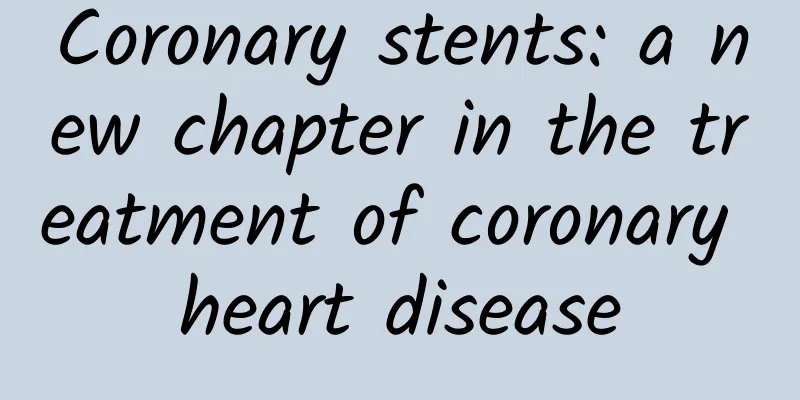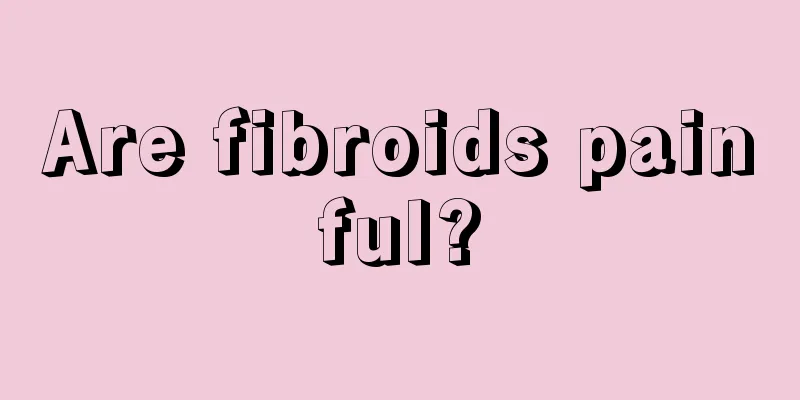Coronary stents: a new chapter in the treatment of coronary heart disease

|
Coronary heart disease, as a major health challenge worldwide, has a serious impact on the quality of life of countless patients. Coronary heart disease, referred to as CHD (full name: coronary atherosclerotic heart disease, sometimes also called ischemic heart disease), is a series of heart problems caused by insufficient blood supply to the heart due to coronary atherosclerosis. The complexity of this disease lies in its diverse causes, slow progression, and often accompanied by multiple complications. However, with the advancement of medical technology, the emergence of coronary stents has brought new hope to patients with coronary heart disease. 1. Causes and symptoms of coronary heart disease The main cause of coronary heart disease is atherosclerosis of the coronary arteries, a process similar to the gradual accumulation of dirt inside a long-term used water pipe, which eventually leads to narrowing or blockage of the pipe. Hypertension, smoking, diabetes, hyperlipidemia, genetics, and inflammation can damage the vascular endothelium, promote the formation of atherosclerotic plaques, and increase the risk of coronary heart disease. When the coronary artery narrows to a certain extent, the patient may experience symptoms such as chest pain and breathlessness during exercise or emotional excitement, and in severe cases may even lead to myocardial infarction. 2. Comprehensive treatment strategy for coronary heart disease Treatment of coronary artery disease requires a multifaceted, comprehensive strategy that includes lifestyle changes, drug therapy, and revascularization. 1. Lifestyle changes: This is the basis for the treatment of coronary heart disease, including increasing exercise, controlling weight, quitting smoking, low-fat diet, etc. These measures are essential for controlling blood pressure, blood sugar and blood lipids, and can effectively slow the progression of coronary heart disease. 2. Drug therapy: Drug therapy is an important part of the treatment of coronary heart disease, including antiplatelet drugs, drugs that stabilize plaques, drugs that reduce cardiac oxygen consumption, drugs that inhibit myocardial remodeling, and drugs that improve metabolism, etc. These drugs need to be taken for a long time to achieve the purpose of prolonging life and reducing the risk of myocardial infarction. 3. Revascularization: Revascularization is one of the main means of treating severe coronary heart disease, including coronary artery intervention and coronary artery bypass grafting. Coronary artery intervention, namely coronary stent implantation, is a minimally invasive procedure that delivers a stent into a narrowed or blocked coronary artery through a vascular route and restores vascular patency through balloon dilation. 3. Introduction of Coronary Stents A coronary stent is a medical device used to treat coronary artery disease. It is a metal mesh structure that is implanted into a narrowed or blocked coronary artery to restore blood flow. The procedure to implant a stent is called a coronary intervention, which is a minimally invasive treatment method with lower risks and faster recovery than open-chest surgery. The materials and technology of stents have been continuously developed with the advancement of science and technology. The original stents were made of stainless steel, but now the commonly used stent materials include cobalt-chromium alloy and platinum-chromium alloy. These materials have good biocompatibility and elastic properties, and there is no so-called "rejection" reaction. After implanting the stent for several weeks to 1 year, the coronary endothelial cells will cover the surface of the stent, making the stent "buried" in the wall of the tube, and continuously providing support. With the development of technology, coronary stents have evolved into drug-eluting stents and biodegradable stents. Drug-eluting stents are coated with drugs on the surface of the stent, which can inhibit excessive proliferation of endothelial cells and vascular remodeling, and reduce the probability of restenosis. Biodegradable stents are made of materials that can be metabolized and absorbed by the human body, and can gradually dissolve in blood vessels, reducing the risk of restenosis and thrombosis. 4. Misunderstandings and truth about coronary stents Although coronary stents have achieved remarkable results in treating coronary heart disease, some patients still have misunderstandings about them. The following are some common misunderstandings and their truths: Myth 1: You need to take medication for life after stent implantation The truth: After the stent is implanted, the patient needs to take some medication to ensure the normal function of the stent and prevent potential risks. These drugs, such as antiplatelet drugs, are mainly used to prevent thrombosis and ensure that blood flows smoothly in the blood vessels. However, this does not mean that patients need to rely on these drugs for life. Everyone's situation is unique, and the doctor will flexibly adjust the type and dosage of the drug according to the patient's specific condition, such as the degree of improvement of the condition, drug response and other factors. Therefore, patients do not have to worry too much about the need to take medication for life. They only need to actively cooperate with the doctor's treatment suggestions and have regular checkups to ensure the health and stability of their bodies. Myth 2: Stents can fall off or shift The truth: Modern coronary stent design has reached a very high level of technology. These stents are made of special materials with strong toughness and fit. When they are accurately implanted in the blood vessels, they can fit tightly to the inner wall of the blood vessels, as if they are part of the blood vessels. This close fit ensures the stability of the stent, and it will not fall off or shift even during daily activities. Therefore, patients can safely undergo stent implantation surgery and enjoy the therapeutic benefits it brings without having to worry about the safety of the stent. Myth 3: Stent implantation will affect quality of life The truth: Stent implantation is actually a life-saving procedure for patients. It can not only significantly improve the quality of life of patients, but also effectively reduce or eliminate painful symptoms such as angina. Through stent implantation, patients can regain the health of their hearts and enjoy normal daily activities again, whether walking, exercising or working, without being constrained by heart disease. Therefore, stent implantation is undoubtedly a blessing for patients, allowing them to regain the joy and hope of life. 5. Technological innovation of coronary stents The development of coronary stents marks a new chapter in the treatment of coronary heart disease. The initial coronary stents were made of stainless steel, and then developed into materials with better biocompatibility such as cobalt-chromium alloy and platinum-chromium alloy. These metal mesh stents are implanted into narrowed or blocked coronary arteries through minimally invasive surgery to restore blood flow and reduce the onset of myocardial ischemia and angina pectoris. With the advancement of technology, drug-eluting stents and biodegradable stents have gradually become new options. Drug-eluting stents are coated with drugs on the surface of the stent to prevent restenosis of the blood vessels, which can effectively reduce the risk of restenosis of the blood vessels. Biodegradable stents are made of materials that can gradually degrade in the body. After completing the support task, they will be gradually absorbed by the body, thus avoiding the potential problem of long-term retention of foreign bodies. VI . Clinical Application of Coronary Stents and Patient Guidance Coronary stent implantation is a minimally invasive treatment method with lower risks and faster recovery than open-chest surgery. During the operation, the doctor inserts a catheter through the artery of the arm or leg, delivers the compressed stent to the narrowed area, and then uses a balloon to expand the stent to form a support grid on the inner wall of the blood vessel to provide support for the coronary artery. After stent implantation, patients need to continue medication and undergo regular follow-up examinations. In addition, lifestyle adjustments are also crucial. Cultivating healthy habits such as quitting smoking, controlling diet, and increasing exercise can play an important role in reducing the risk of recurrence of coronary heart disease. Conclusion As an important means of treating coronary heart disease, coronary stents have been widely used around the world and have achieved remarkable therapeutic effects. Through the popularization of this article, we hope to eliminate the public's misunderstanding of coronary stents and enhance patients' confidence and cooperation in treatment. At the same time, we should also realize that the treatment of coronary heart disease is a long-term process that requires the joint efforts of patients, doctors and society to jointly maintain heart health through improved lifestyles, rational use of drugs and necessary medical interventions. Remember, a healthy heart requires our joint efforts and protection. Author: Zhang Wenchao Department of Cardiology, Peking University International Hospital |
<<: Drugs and psychology: the principles and misunderstandings of antidepressants
Recommend
Success rate of fetal preservation for threatened miscarriage one month into pregnancy
Threatened miscarriage one month into pregnancy i...
The difference between menstrual period and pregnancy breast swelling
During pregnancy, expectant mothers have to face ...
Here are some ways to relieve menstrual pain:
I believe that some young women have experienced ...
Symptoms of progesterone deficiency in women
Progesterone deficiency is a health problem that ...
Why did I start my period at the age of 11?
Every girl who has entered puberty is very concer...
What kind of tea is best for women?
Tea culture in China is extensive and profound. I...
How to treat moderate cervical erosion?
Cervical erosion is a very common gynecological d...
Pregnancy after stopping dydrogesterone
It is well known that if a woman takes dydrogeste...
Fetal ultrasound screening that pregnant mothers should not ignore
When a woman becomes pregnant, her body begins to...
Girls have pain on the left side of their chest
Chest pain is a very common symptom among girls. ...
What is vaginal bleeding after abortion?
Some women experience unexpected symptoms after a...
Learn about the diagnosis and treatment of peptic ulcers
What is a peptic ulcer? The stomach can be divide...
Can I eat white beans during my period?
The most feared thing during menstruation is abdo...
What is the yellow-green tofu-like leucorrhea?
Yellow-green leucorrhea that is like tofu residue...









